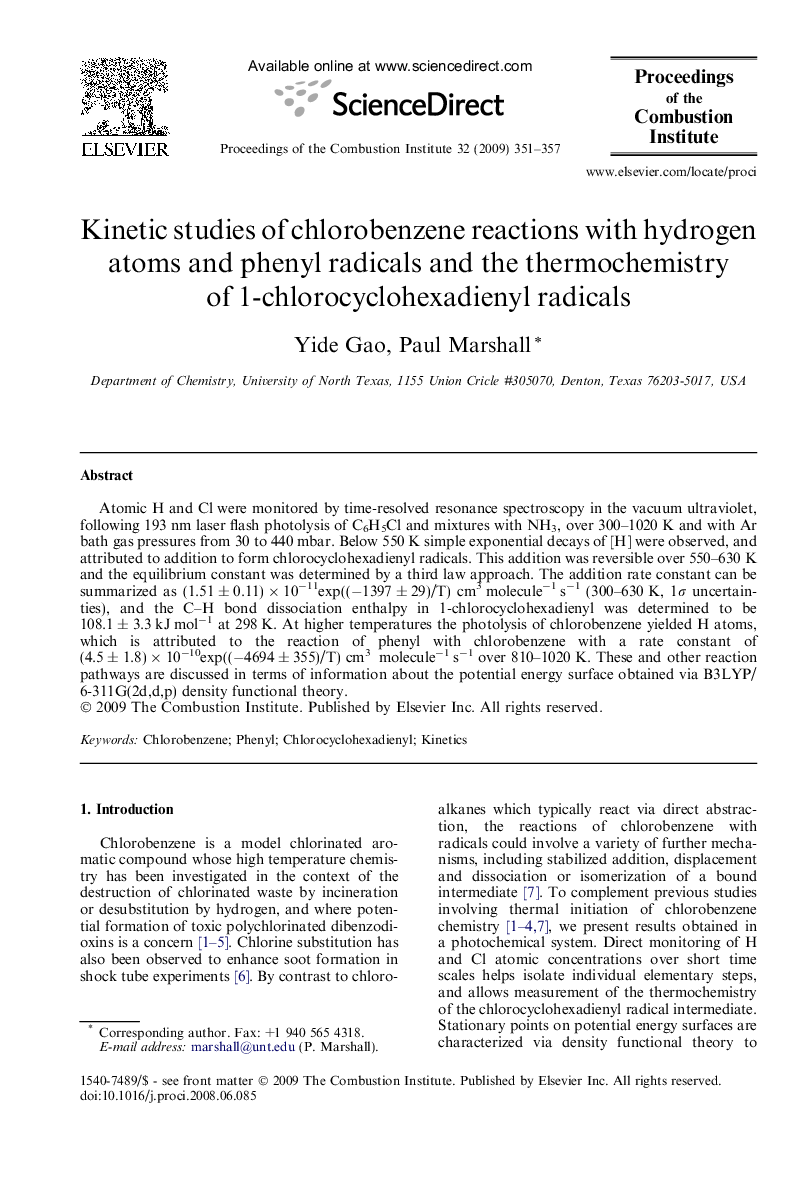| Article ID | Journal | Published Year | Pages | File Type |
|---|---|---|---|---|
| 6679424 | Proceedings of the Combustion Institute | 2009 | 7 Pages |
Abstract
Atomic H and Cl were monitored by time-resolved resonance spectroscopy in the vacuum ultraviolet, following 193 nm laser flash photolysis of C6H5Cl and mixtures with NH3, over 300-1020 K and with Ar bath gas pressures from 30 to 440 mbar. Below 550 K simple exponential decays of [H] were observed, and attributed to addition to form chlorocyclohexadienyl radicals. This addition was reversible over 550-630 K and the equilibrium constant was determined by a third law approach. The addition rate constant can be summarized as (1.51 ± 0.11) Ã 10â11exp((â1397 ± 29)/T) cm3 moleculeâ1 sâ1 (300-630 K, 1Ï uncertainties), and the C-H bond dissociation enthalpy in 1-chlorocyclohexadienyl was determined to be 108.1 ± 3.3 kJ molâ1 at 298 K. At higher temperatures the photolysis of chlorobenzene yielded H atoms, which is attributed to the reaction of phenyl with chlorobenzene with a rate constant of (4.5 ± 1.8) Ã 10â10exp((â4694 ± 355)/T) cm3 moleculeâ1 sâ1 over 810-1020 K. These and other reaction pathways are discussed in terms of information about the potential energy surface obtained via B3LYP/6-311G(2d,d,p) density functional theory.
Keywords
Related Topics
Physical Sciences and Engineering
Chemical Engineering
Chemical Engineering (General)
Authors
Yide Gao, Paul Marshall,
